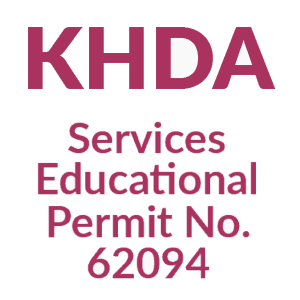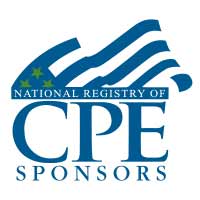Classroom Sessions:
| Date | Venue | Fees | |
|---|---|---|---|
| 17 - 28 Jun 2024 | Dubai - UAE | $11,900 | |
| 07 - 18 Oct 2024 | Dubai - UAE | $11,900 |
Online Sessions:
| 07 - 18 Oct 2024 | Online | $7,900 |
INTRODUCTION
This 10 –Day GLOMACS Integrated Quality Management Systems (QMS) and Implementing Hazardous Waste Concepts Training Course will give some details on these various types of contaminants and the new frontiers in eliminating or minimizing these contaminants, the use of effective non-hazardous products in your company and also environmentally acceptable methods of disposal for both hazardous and non-hazardous wastes.
MODULES
This training course is split into two modules:
MODULE I - Hazardous Waste Management and Pollution
MODULE II - Implementation of Quality, Environmental and Health & Safety Management Systems
Each module is structured and can be taken as a stand-alone training course; however, delegates will maximise their benefits by taking Module 1 and 2 back-to-back as a 2-week training course.
Objectives
- Learn about the various types of contamination and which ones are more applicable to your company
- Learn about the relevant environmental treaties dealing with contamination and pollution
- Learn how to prioritize contamination problems in dealing with contamination and waste management issues in a logical sequence
- Show and emphasize the close relationship between human health and the environment that’s been directly affected by contamination
- Discussion of the current methodologies for the cleanup of contaminated soil, ground and surface water, air pollution, construction materials and radioactive materials
- Perform IMS auditing with the skills and methodology acquired
- Demonstrate the process-based approach in auditing
- Develop and implement an effective internal audit programme in line with ISO 19011 and the concept of Plan-Do-Check-Act (PDCA)
Training Methodology
This GLOMACS Integrated Quality Management Systems (QMS) and Implementing Hazardous Waste Concepts (Module I and II) Training course will combine presentations with instructor-guided interactive discussions between participants relating to their individual interests. Practical exercises, video material and case studies aiming at stimulating these discussions and providing maximum benefit to the participants will support the formal presentation sessions. Above all, the course leader will make extensive use of case examples and case studies of issues in which he has been personally involved.
Organisational Impact
- The organization, based on the training received by its employees at the course, will have less cause for concern of real or potential contamination problems at the plant, and this usually results in improved productivity
- By addressing real or potential contamination problems from the company’s operations, the whole audit management process (system audits, process audits, review audits, surveillance audits, re-registration audits, etc.) will be made easier and less stressful
- If contamination should occur, reduced healthcare costs, cleanup costs for the organization knowing that contamination issues are fully addressed and managed
- Enhanced reputation of the organization in the community knowing that there will not be any
- Increased efficiency and effectiveness, and cost reductions while minimizing the disruption caused by several external audits
- Commitment to increased performance, employee and customer satisfaction, and continuous improvement
- Efficiency is gained from less duplication, and it becomes easier to adopt new systems in future
- An IMS allows management team to create one system that can help to effectively and efficiently deliver your organization’s objectives
Personal Impact
- Risk Reduction knowledge which will provide lasting benefits both personally and professionally
- Safer workplace environment
- Personal psychological advantage of an employee doing his or her part concerning contaminants reduction via “Think Globally, Act Locally”
- Personal pride in being an employee of an organization that’s fully committed to addressing and managing real or potential contamination issues & to protecting the environment and preventing pollution
- Work together, with each function aligned behind a single goal: Improving the performance of the entire organization
- Coordinated effort which is greater than the sum of its parts and is not only more efficient but more effective
WHO SHOULD ATTEND?
- Quality Assurance Managers
- Environmental Managers
- Health Safety Managers
- General Managers
- ISO 9001 / ISO 14001 / ISO 45001 Implementation Team Members
- Safety Officers
- Quality Directors
- Regulatory Affairs Managers
- Management Representatives
- Internal Auditors
- Individuals interested in conducting second or third-party audits of EMS and OHSAS management systems.
- Staff responsible for managing Hazardous Wastes
- Staff responsible for Contamination Issues
- Laboratory Technicians
Module 1: Hazardous Waste Management and Pollution
DAY 1
Brief History of Contamination and Introduction to Hazardous Wastes
- What is Contamination and how does it affect us?
- A Detailed Look at All the Various Types of Contamination
- Global Environmental Issues related to Contamination
- International Environmental Treaties and Guidelines related to Contamination
- The Toxic 12 Chemicals and the Role of the United Nations Environment Program (UNEP)
- The Current Watch List for Chemicals that soon may be added to the Toxic 12
- Environmental Law and its Significance
- Definition of Hazardous Wastes & Non-Hazardous Wastes
- Connecting the Dots between Contamination and Hazardous Wastes
DAY 2
Management of Contamination and Hazardous Wastes
- The Relationship between Contamination and Occupational Health & Safety
- The Importance of Documentation in Hazardous Waste Management
- Some Typical Hazardous Waste Regulations and the Need for Harmonization
- The Purpose of a Workplace Hazardous Materials Information System (WHMIS)
- The Purpose of a Material Safety Data Sheet (MSDS)
- Why a Globally Harmonized System (GHS) is Essential for WHMIS and MSDS?
- Carrying-out a Contamination Audit
- Managing a Waste Disposal Site
DAY 3
Contamination and Pollution Prevention
Discussions on common contamination sources from the contamination audit, sources of pollution and techniques and technologies to prevent or minimize them.
- Exploration & Production-Refining & Transportation
- Oil Spills with Special Reference to the April 2010 Gulf of Mexico Oil Slick Occurrence
- Modern Tanker Design to Minimize the Occurrence of a Major Oil Spill
- Other Oil related Sources of Pollution
- The Common Thread amongst many Third World Countries concerning Pollution Issues
- The Current Concepts of Zero Waste (ZW) and Zero Liquid Discharge (ZLD) and their Limitations
- The Bird Problem - Pollution from Bird Droppings and Dead Birds and the Latest Available Technologies to Control this Problem
DAY 4
Continuation of Contamination and Pollution Prevention Planning and Contingency Planning for Major Incidents
- Life Cycle Management of All Materials being Used in a Company
- The 5R’s - Reduce, Reuse, Recycle, Recover and Rethink
- Detailed Requirements for Proper Storage of Hazardous Materials
- The Importance of On-going Training
- The Importance of Regular Reviews of Emergency Plans
- Updated Information on ISO 14001, 18001 and 9001
- Types of Environmental Audits
- Discussion of Some Major Preventable Accidents
DAY 5
Big Picture Review of the Management and Prevention of Contamination and Hazardous Wastes
- HAZID (HAZard IDentification)
- HAZOP (HAZard & OPerability)
- Environmental Ethics
- Climate Change Update and its Significance for the Gulf Coast Countries
- Recommendations including Greening your Company at a Reasonable Cost
Module 2: Implementation of Quality, Environmental and Health & Safety Management Systems
DAY 6
Introduction to QMS Quality Management Systems
- Quality Management and ISO 9000 Series
- Quality Systems Certification
- ISO 9001:2017 in Detail
- 1st, 2nd and 3rd Party Audits
- Auditing Theory and Practice
- ISO 19011 Guidelines for Auditing Quality Systems
- The Assessment Process
- How to Conduct Opening and Closing Meetings
- Effective Assessment and Audit Planning
- Audit Team Selection
DAY 7
Introduction to QMS Quality Management Systems [Continued]
- Development and use of Audit Check Lists
- Searching for Evidence of Compliance
- Psychology of Audit and Assessment
- Recording and Reporting Audit Results
- Writing Non-Conformity Statements and Audit Report Writing
- Evaluating Audit and Assessment Results
- Audit Close-Out, Follow-Up and Surveillance
- Roles and Responsibilities
DAY 8
Introduction to ISO 14001 : 2015 Environmental Management System
- The Background and General Introduction to Environmental Issues
- The Challenge of Sustainable Development and Strategic Business Drivers
- The Background to Development of the EMS and the Current Status of 14001
- Key Elements of the EMS Standard and its Relation to ISO 9001
- Types of Environmental Audits and Assessments including technical, functional and management systems and relevant terminology and jargon
- Environmental Legislation (UAE) relevant to Pollution Control via emissions to air, discharge to water and disposal to Land
- Determination of Environmental Aspects and Methodologies for Establishing Significant Impacts
- Management Control over Operations and Monitoring of Performance
DAY 9
Transition to ISO 45001:2018 Occupational Health and Safety Management System
- The Background and General Introduction to OHS Developments of 45001
- ISO 45001:2018 Series of Requirements and Changes
- OHS Legislation and Policy (UAE)
- OHS Planning and Management Systems
- OHS Implementation and Control
- Determination of Hazard Aspects
- Checking and Corrective Action
- Methodologies for Establishing Effective Implementation
- Audit Purpose
- Difference between the Management System Standards
DAY 10
Integrated Management Systems Concepts [IMS]
- IMS Concept, Definition and Documentations
- Integration of System Documentation
- Methodology Audit Skills of IMS Audit and Compliance
- Selection of IMS Auditors
- IMS Auditing (including preparation and reporting)
- Benefits of IMS
- Course Review
- On successful completion of this training course, GLOMACS Certificate will be awarded to the delegates
- Continuing Professional Education credits (CPE) : In accordance with the standards of the National Registry of CPE Sponsor, one CPE credit is granted per 50 minutes of attendance
Endorsed Education Provider
GLOMACS is registered with the National Association of State Boards of Accountancy (NASBA) as a sponsor of continuing professional education on the National Registry of CPE Sponsors. State boards of accountancy have final authority on the acceptance of individual courses for CPE credit. Complaints regarding registered sponsors may be submitted to the National Registry of CPE Sponsors through its website: www.NASBARegistry.org




